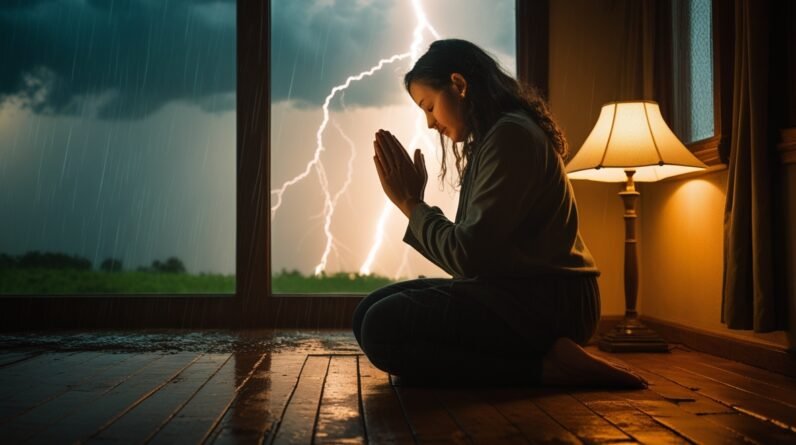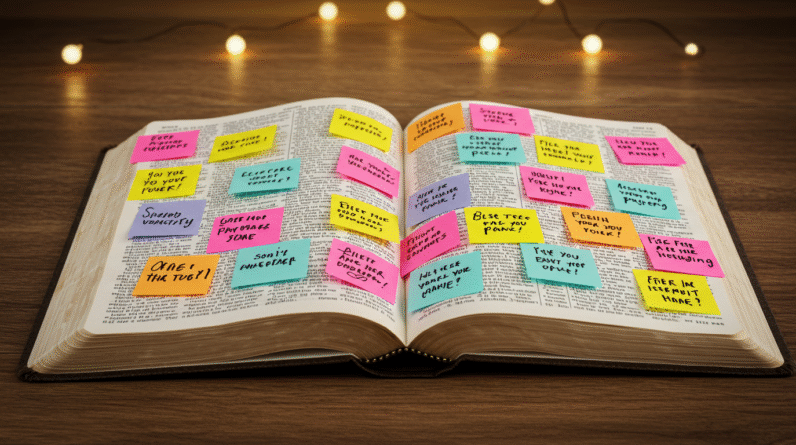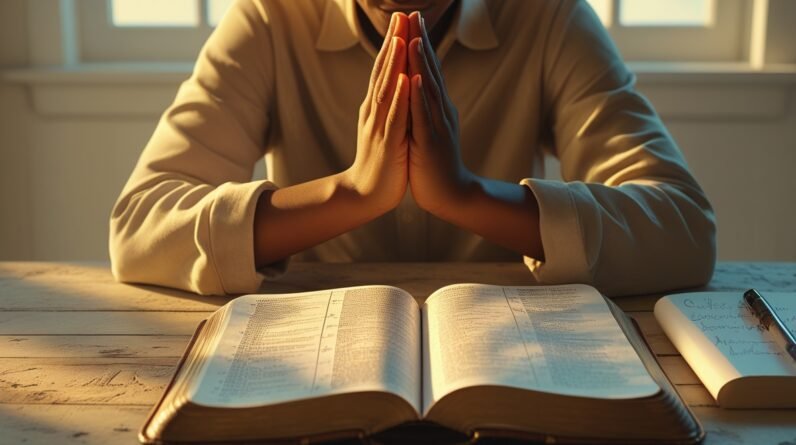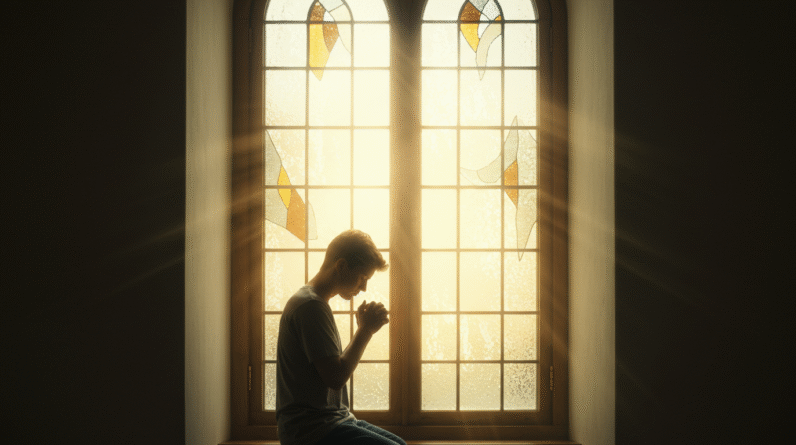Why The Power Of Prayer Brings Miracles
You might read that title and feel a slight resistance, like a flea under your tongue. It sits there — hope, skepticism, the memory of a prayer unanswered — and you aren’t sure what to do with it. You know the stories: hands clasped in a hospital room, an entire town outside a church praying for rain, someone on their knees in the dark who later tells you the world rearranged itself around them. You might not have said it aloud, but at heart you believe this because Prayer brings miracles. That belief is quiet and complicated and often unsteady, and it’s worth talking about in a way that doesn’t demand immediate conversion or shame you for doubt.
In this piece you’ll get biblical stories, reflections on how prayer actually functions, and some real-life testimonies that don’t make miraculous claims lightly. You’ll also get practical guidance — what prayer looks like when you want something to change, and what it feels like when it doesn’t. The aim isn’t to tell you that prayer is magic, nor to blind you to grief or uncertainty. The aim is to show how prayer, again and again in scripture and in lives, opens channels that end in outcomes you might rightly call miracles.
What you mean by prayer (and why it matters)
Prayer is often thought of as asking: a list, a petition, a whispered wish. That’s part of it. But when you look at prayer as a pattern — a discipline of attention, of naming, of aligning — it becomes broader. Prayer can be speech or silence, it can be a desperate plea, and it can be a steady presence. It can be the communal cry of a houseful of people or the private confession you make into your pillow.
When you pray, you do something with your attention. You set your focus on something outside the immediate carousel of desire and distraction. That simple redirection, practiced over days and years, changes the way you move in the world. And when you change the way you move, sometimes the world responds in ways that feel like miracles.
What is a miracle — biblical and human-scale
Miracles in scripture are often dramatic: water parts, a paralytic walks, a dead person rises. But the Bible also leaves room for smaller wonders — provision in a famine, a sudden change of heart, a quiet peace in the middle of terror. You need to recognize both scales if you’re going to understand why Prayer brings miracles. Some of the most persuasive biblical moments combine a visible sign with a deeper interior movement: the community’s faith strengthens, a leader is emboldened, fear recedes.
It’s worth reading a few of those stories closely, because the shape of each one shows you how prayer interacts with human will, divine action, and communal life.
Biblical examples that show prayer opening the way
You don’t have to take my word for it; the Bible offers several instances where prayer is the hinge on which a miraculous turn occurs. You can follow each passage to read it yourself.
Elijah and the fire on Mount Carmel
Elijah stands before Ahab and the prophets of Baal; the contest is public, raw, and embarrassing in a way that means everything depends on what happens next. Elijah prays, and the fire comes down and consumes the offering. It’s not only a spectacle — it’s a testimony that the people can see. Read it yourself in 1 Kings 18:36-38. The miracle here is both external and communal: a decisive sign that shifts public allegiance.
Elijah raises the widow’s son
A quieter miracle follows earlier in Elijah’s story, when a widow’s son dies and Elijah prays over him. He stretches himself on the child three times, cries out to God, and the child’s life returns. You can find that in 1 Kings 17:20-22. Notice the intimacy of the act — a prophet leaning in, insisting with God. That intimacy is often present in stories where prayer leads to life.
Jesus heals the woman who touched his cloak
There are stories in the Gospels where a person’s faith and a gentle, private interaction with Jesus lead to healing. In Mark, a woman who has been bleeding for twelve years touches Jesus’ garment in the crowd and is told, “Daughter, your faith has healed you.” See Mark 5:34. The miracle here is mediated by a combination of faith, touch, and the public acknowledgement that what happened is real.
The church prays, and Peter is freed
In Acts, you find a striking picture of communal prayer leading to a miraculous change in circumstances. The church prays earnestly for Peter while he remains in prison; an angel appears, releases him from chains, and he walks out, surprised to find the church unaware that he’s escaped. Read it in Acts 12:5-17. The story shows prayer as a form of moral and spiritual pressure that alters reality.
The prayer of faith in James
James writes in a straightforward, almost bureaucratic way about prayer: “The prayer of a righteous person is powerful and effective.” He gives the example of Elijah offering a prayer that brought drought and a prayer that brought rain. See James 5:16-18. The point is technical but simple: prayer is part of effective action in the world.
Jesus promises answered prayer
You’ll find a line in John that has comforted many: “You may ask me for anything in my name, and I will do it.” Read these words in John 14:13-14. The promise doesn’t make prayer a spin-the-wheel guarantee; the surrounding context is about abiding, about relationship. Still, the text presents prayer as an avenue through which divine action becomes accessible.
Ask and you will receive
Jesus also says in Luke and Matthew, in different ways, that you should ask, seek and knock — the implication being a persistence that reforms both the asker and what’s asked. See Luke 11:9-10 and Matthew 21:22. These passages model prayer as both practice and posture: the more you ask with attention, the more likely you are to see results.
After reading these stories, you’ll notice a pattern: prayer often precedes a visible change, but it’s rarely shown as a mechanical lever. Instead, it’s woven into relationship, dependence, communal action, and moral alignment. From this, you can understand why, faced with both scriptural testimony and human experience, you conclude that Prayer brings miracles.

How prayer actually changes you — the interior miracle
You’re not a machine. Your nervous system, your memory, your habits — these are the places prayer works before anything for which you’d call a miracle externally occurs. When you begin to pray about something, you bring focus to it, and focus is a kind of alchemy. You concentrate on a need and in the same moment start to organize resources — attention, time, relationships — around it.
This interior change can look like patience where there was panic, discernment where there was confusion, or courage where there was retreat. Those are not lesser goods. Sometimes your heart’s reconfiguration is the real miracle; sometimes that reconfiguration becomes the cause of the external miracle. You alter your posture, and the world shifts to meet you halfway.
How prayer moves communities and circumstances
Individual prayer matters, but communal prayer has a different weight. When a room full of people lifts the same concern, something social happens: solidarity forms, actions become coordinated,and accountability increases. In Acts, the church praying for Peter wasn’t merely making noise; they were aligning their wills. That alignment had social consequences — they stayed awake, they expected rescue, they reorganized their time around intercession — and sometimes social consequences become the very environment in which miracles occur.
Collective prayer is also a pressure on leaders and systems. When a community prays for justice, for the vulnerable, or for policies to change, you often see shifts because people’s attention becomes concentrated and persistent. It’s not guaranteed, but the correlation is strong enough that faith communities keep doing it. When you experience the momentum of many people’s prayers, you can feel it as a force; it’s then that you understand why Prayer brings miracles not only in private but in the public sphere.
Real-life testimonies — small and large stories of turned outcomes
You’ll want concrete examples; you might be suspicious of them. Testimonies are mixed — they’re messy and often contain more questions than answers — but they matter because they show how prayer functions in the life of the human world.
A pastor you know will tell you about a couple who had tried in vitro fertilization for years. They’d fought privately and publicly, and finally, with a kind of weary surrender, they began to pray together every night just to be together, not to control. One winter morning she found out she was pregnant. When the pastor asked what had changed, they said the way they had prayed had softened their marriage; they began to make different choices, to talk about adoption in the way they’d never allowed themselves to, to keep medical appointments they’d been avoiding. The pregnancy, for them and for the pastor, felt like a miracle. You can see the overlap of interior change and external event.
Another example: a town in a drought decided to fast and pray together. They cleared an alley, they met in the town hall, and they organized the baker to hand out bread to the old. Suddenly, rain came after weeks of none. The rain felt like a miracle, of course, but the community’s internal reconfiguration — cooperation, generosity, focus — had already been miraculous.
A nurse tells you quietly of a patient whose numbers were plummeting. The staff prayed together at the bedside; that same afternoon, the patient stabilised. The nurse was careful not to claim direct causality, but the team’s morale altered, and their attentiveness sharpened. That altered attentiveness sometimes is the hinge.
These are not arguments you can reduce into statistics easily, and you shouldn’t try to force them into a tidy logic. The point is not that prayer is a magical button you push to get what you want, but that prayer both forms you and mobilizes the people and systems around you in ways that can bring about unanticipated, life-giving results. Which is why so many people come back, again and again, to the practice — because they’ve seen it work.
A testimony that kept recurring was that Prayer brings miracles. Those people weren’t naïve; they were people who had learned to witness the quiet edges of change and recognize them for what they are.
When prayer feels unanswered — what to do with doubt
You will pray and get no obvious outcome. You will watch someone you love die despite weeks of intercession. You will have seasons in which any talk of miracles feels cruel. Part of a mature practice of prayer is learning to sit with that silence without deciding in advance that silence equals absence.
James warns that sometimes you ask with the wrong motives, and that can make it feel like prayer fails; see James 4:3. But he also tells you elsewhere that the prayer of a righteous person is powerful. That tension is real. You can use it as an excuse to stop, or you can use it as a discipline to refine why you pray.
There’s another important dimension: timing. Scripture often shows that God’s answer happens on a schedule you don’t control. In Acts, the church prays for Peter, and he’s released unexpectedly; yet the narrative also shows that the release comes after an angelic intervention, not because the church willed it into being by sheer force. You need to be honest about the difference between what you can directly cause and what you can open yourself to. Holding both things — action and surrender — is part of faith.
The psychology and physiology: you’re not imagining it
You may not like the phrase “placebo effect” because it sounds small, but there’s a lot of careful research showing that focused attention, ritual, and communal support improve outcomes in measurable ways. Prayer can lower stress, strengthen relationships, and mobilize social resources. When you pray, you often change the social context of your problem: you tell people, you gather support, you get help. All of this matters.
That said, the effect is not only psychological. You can’t reduce every healing to a placebo or communal effort. The Bible’s claims and the testimonies of many people insist on instances where change happens in ways that escape easy reduction. The two claims — that prayer has measurable effects on human systems, and that sometimes occurrences surpass scientific explanation — can live together in your thinking without contradiction.
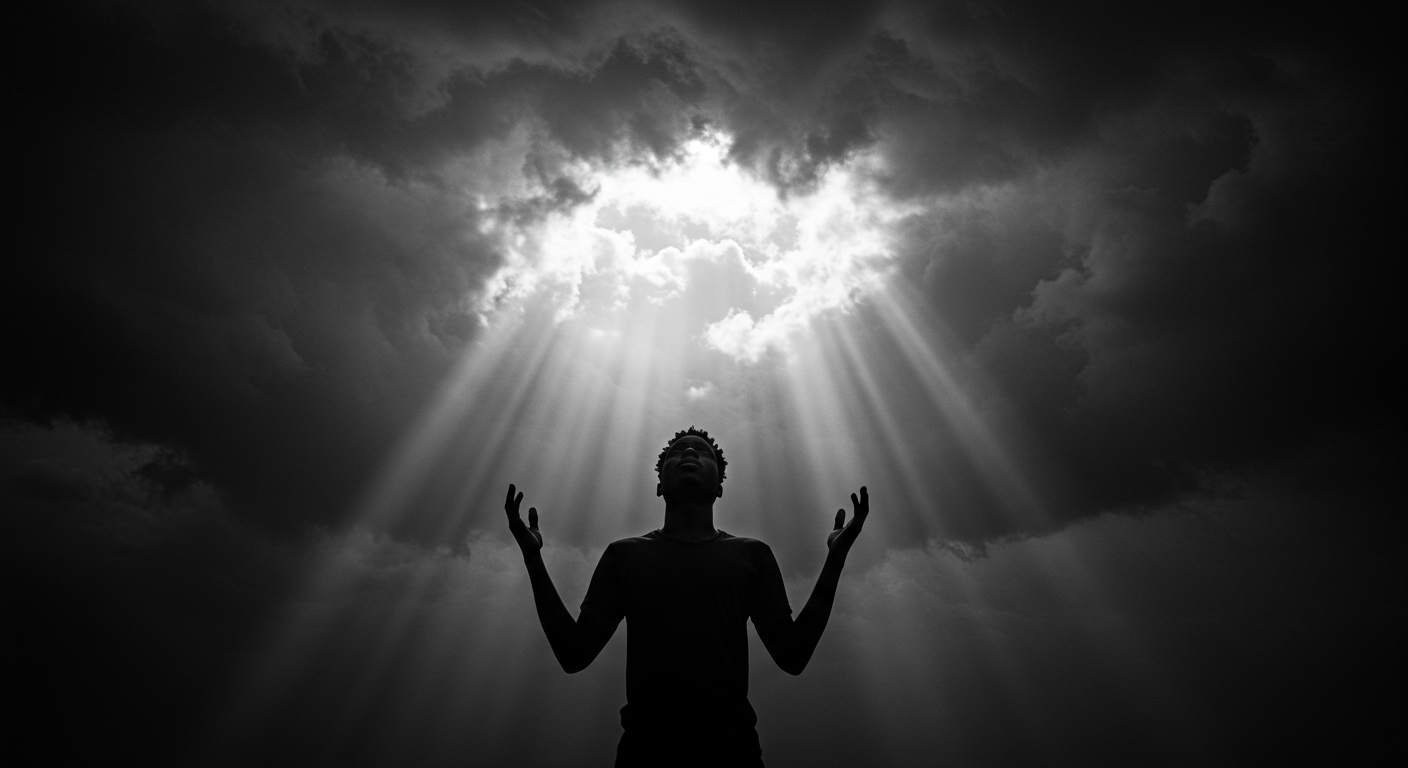
How to pray if you want a miracle
You probably want something practical, some steps that aren’t manipulative but still hopeful. Here are actions you can take that acknowledge both your desire and the humility of prayer.
- Begin where you are: Be honest. If you are angry or tired, say so. Sincerity is more effective than polished rhetoric.
- Combine petition with listening: Make your request, but remain quiet afterward. Prayer is a two-way practice.
- Pray with others: The communal voice is surprisingly strong. If you’re embarrassed about public prayer, start with a small circle.
- Persist, but be willing to change: Repetition matters, but so does adaptation. If your prayers shape you in a way that suggests different actions, consider those actions.
- Pray for alignment, not just outcomes: Ask for a heart that can accept help, for courage to act, for clarity in decision-making.
These aren’t formulas. They’re practices you adopt if you want prayer to be a meaningful force in your life. Remember that Prayer brings miracles not because you earn them but because you align with something larger — whether you call it God, the spirit of the community, or the hidden logic of grace.
Common objections and careful answers
You’ll hear people say that prayer is selfish, or that praying for miracles is naive. Part of your work when you take prayer seriously is to parse motives. If you pray only for your own comfort, you’ll be less sensitive to the larger ethical demands that faith requires. But prayer, when it matures, tends to widen your heart into concern for others.
There’s also the ethical problem of suffering: if prayer works, why do babies die? You will not get an answer to that question that’s simple or satisfying. You will have to live with tension. Scripture models that tension by refusing to simplify suffering; it also offers sustained hope that suffering is not the last word. Living in that tension — not avoiding it, not forcing easy answers — is part of what prayer asks of you.
The narrative you join when you pray
When you pray, you don’t just speak into emptiness: you enter a narrative that extends backward and forward. You join thousands of people who have stood at thresholds and asked for help. That narrative gives your prayer context and dignity. It tells you that your moments of private pleading are not isolated; they’re part of a tradition of asking, listening, and sometimes receiving in ways that can only be called miraculous.
You also join a moral story. Prayer reshapes desires; it doesn’t only gratify them. Over time, many people discover that their prayers change — from asking for narrow comforts to asking for wisdom, justice, and mercy. That transformation is itself part of the miracle.
Practical patience — how to live as you wait
Waiting is the hardest part, and waiting doesn’t look like passive ennui. It looks like active, sustained attention. You continue to act where action is available; you pray where prayer is the right mode. You keep showing up for the people who need you. You keep your expectations loose enough to recognize a miracle when it arrives.
The biblical witness keeps this balance. Think again of the widow and Elijah, of the church in Acts, of the woman who touched Jesus’ cloak. None of these stories presents immediate, mechanical results; they present sequences where prayer, action, and divine response are woven together. That weaving is what you join.
Final reflections — what to carry with you
You won’t be satisfied with abstract claims. You want to feel the texture of how prayer works. It makes you steady when you were scattered. It aligns people toward a common aim. It opens the possibility that the world can change.
There’s no simple formula and no guaranteed ledger. You should hold your doubt tenderly, because doubt keeps you honest. You should also hold hope carefully, because hope is the discipline of a good life. Read the scriptures; notice the many ways prayer appears as both request and reorientation. See how the community around you responds when you make prayer a practice rather than a last resort.
Explore More
For further reading and encouragement, check out these posts:
👉 7 Bible Verses About Faith in Hard Times
👉 Job’s Faith: What We Can Learn From His Trials
👉 How To Trust God When Everything Falls Apart
👉 Why God Allows Suffering – A Biblical Perspective
👉 Faith Over Fear: How To Stand Strong In Uncertain Seasons
👉 How To Encourage Someone Struggling With Their Faith
👉 5 Prayers for Strength When You’re Feeling Weak
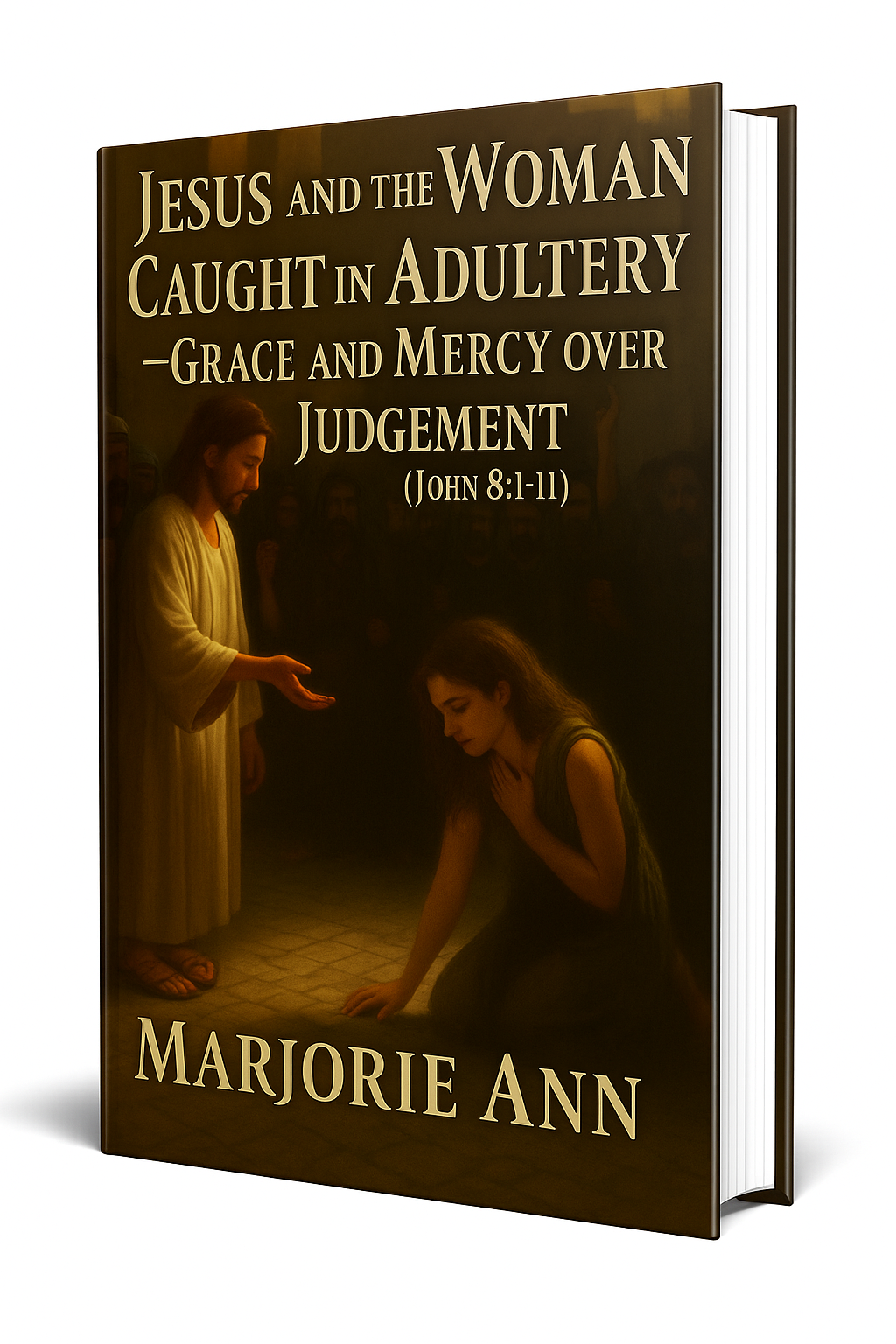
📘 Jesus and the Woman Caught in Adultery – Grace and Mercy Over Judgement
A powerful retelling of John 8:1-11. This book brings to life the depth of forgiveness, mercy, and God’s unwavering love.
👉 Check it now on Amazon
As a ClickBank Affiliate, I earn from qualifying purchases.
Acknowledgment: All Bible verses referenced in this article were accessed via Bible Gateway (or Bible Hub).
“Want to explore more? Check out our latest post on Why Jesus? and discover the life-changing truth of the Gospel!”





